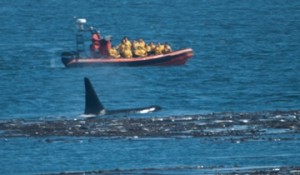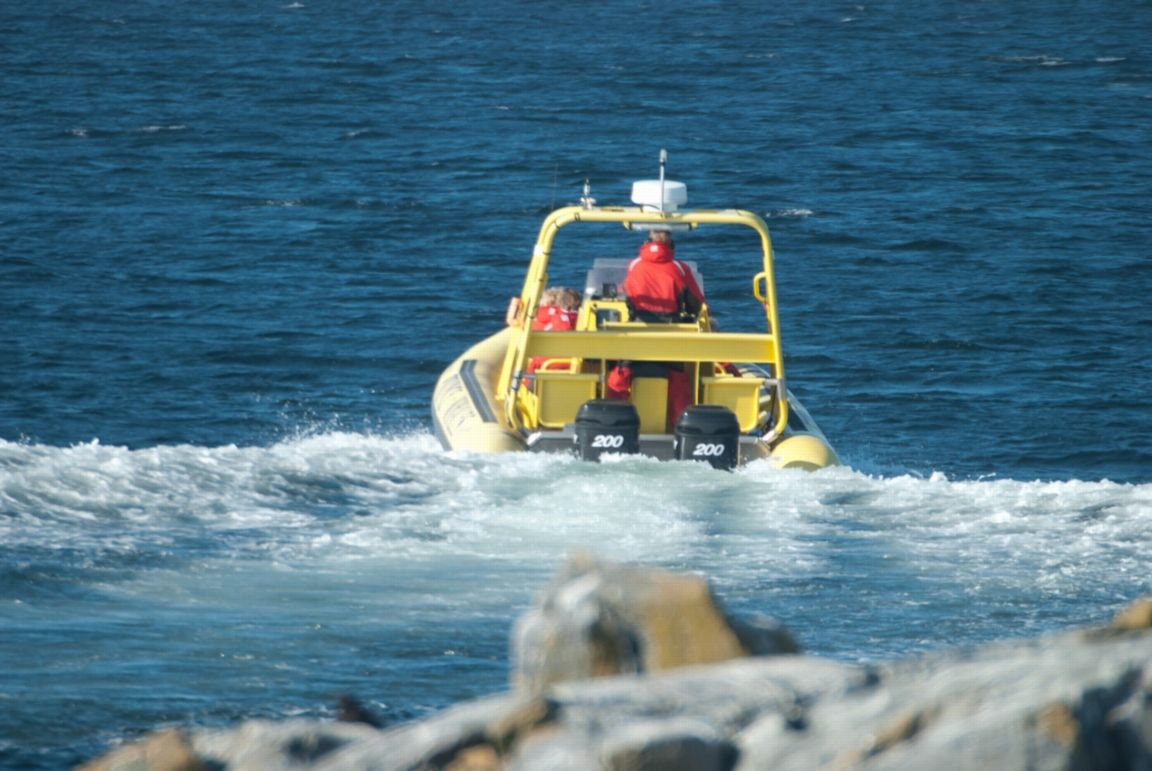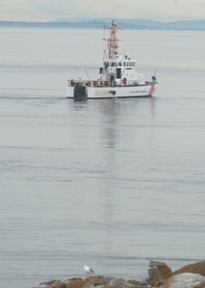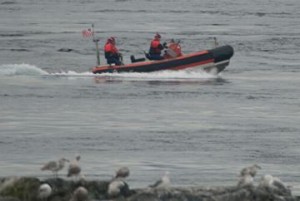A double-crested cormorant was spotted on the rocks on the east side of Great Race at 2040hrs PDT.
Human Interaction:
At ~1400hrs PDT a vessel was spotted fishing on the E side of the South Rocks kelp bed. The station vessel was launched and the vessel was found to be in 106 ft. of water. The four older folks on board proved to be extremely friendly and stated that they had just purchased the boat the week before and it was their very first time on the water! We actually had a great 20 minute conversation about Race Rocks, fishing restrictions, how to distinguish between different types of salmon and general boating practices (how to use a VHF!). The folks were very happy to find out the area was protected and happily moved to deeper waters.
At ~1430hrs PDT a large aluminum vessel entered the W side of the main channel, slowed to look at sea lions on Middle Race, then sped through the main channel to North Race where they approached extremely close to seals hauled out on the rocks.
At ~1445hrs PDT a small aluminum vessel was spotted fishing on the W corner of the North Race kelp bed.
There was 1 visitors to the island today.




